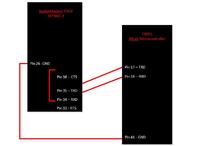dollar_124
Newbie level 3

controlling relays with microcontrollers
Dear Yasir vai,
The AT_commands.pdf is not in active condition..rather the link is not working anymore..Byt the by thanks a lot for your informative...answer...
Dear Yasir vai,
The AT_commands.pdf is not in active condition..rather the link is not working anymore..Byt the by thanks a lot for your informative...answer...







